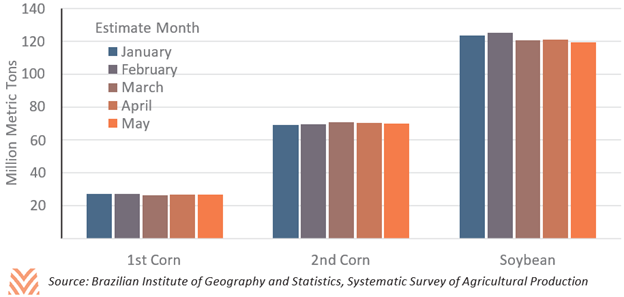Foreign Crop Production in the Wake of COVID-19

At the start of the pandemic, one of the most serious threats to worldwide agriculture was how the outbreak would impact access to labor. Widespread illness had the potential to impact labor-intensive production, as well as processing and transportation. However, through June of this year, no substantive impacts on foreign production have been observed. From Russia to Brazil, our major agricultural competitors are expecting production for important commodities to exceed prior year totals. Globally, the USDA estimates that the total production of wheat, soybeans, and corn for the 2020/21 crop marketing year will exceed that of 2019/20.

Absenteeism
Production risk in agriculture during a pandemic stems from an inability to access labor, either due to worker absenteeism or challenges in accessing migrant labor. Workers may be absent due to illness or out of concern for their safety. In South America, limited migrant labor in Brazilian agriculture means that they are especially exposed to absenteeism concerns. Many important harvests occur during the months that coincided with the initial waves of the pandemic. Brazil’s first corn crop, soybean, and coffee harvests finish between March and May, while the second corn crop begins harvest in May but is largely done in June and July. In response, the Brazilian government classified agricultural labor as essential.
Production estimates from the Brazilian government for these crops showed little change before and after the start of the pandemic. The first corn crop estimate from January was within 2% of the latest release. The record soybean crop did see a 3% decline from January estimates, but that can be explained by dry weather patterns in southern Brazil. In short, official estimates have shown little to no impact on production, implying limited effects from worker absenteeism. Brazil will have many more COVID-19 cases during the ongoing second corn crop harvest, so impacts may still materialize there, despite limited evidence of disruption so far.
Migrant labor
As was the case in the U.S., the European Union had significant hurdles due to their reliance on migrant labor, as nations closed their borders during the pandemic’s initial spread. Some nations, like France and Germany, attempted to encourage newly laid-off workers to enter agriculture, with limited results. However, nations quickly moved to allow seasonal workers through despite the pandemic. In Germany, the federal government offered air travel for 80,000 seasonal workers from neighboring states. Broadly speaking, the importance of migrant labor has been recognized in foreign producers that rely on that labor, and policies have been put in place to mitigate access concerns.
This does not mean that future labor challenges will not arise to harm producers. Off-farm processing and transportation has caused problems in the United States, Europe, and India. A more widespread wave of cases could also cause greater absenteeism or migrant labor issues. However, if current conditions continue, our foreign competitors will see limited impacts to their production, and many will see record production for the current crop marketing year.










